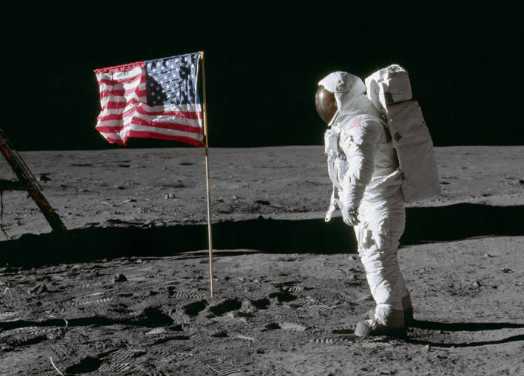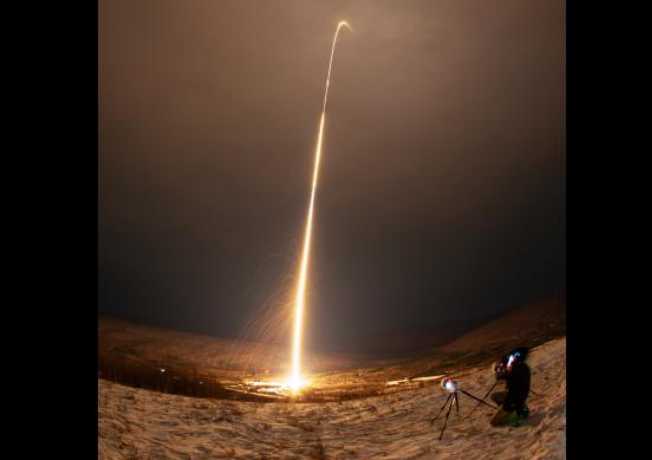
The International Space Station may bring to mind launch pads in Florida or control rooms in Houston, but humanity’s longest continuously inhabited outpost in space also requires near-constant support from a small community just outside Washington, D.C. That’s where, in Greenbelt, Maryland, resides NASA’s Goddard Space Flight Center, home to the station’s communications network and some of the capabilities that support scientific research on station.
Like any NASA mission, particularly those involving human spaceflight, the space station requires a reliable, consistent communications network that allows astronauts to reach mission control, transmit data and even speak with their families. All communications between the station and the ground, as well the cargo resupply and crew missions to the station, are provided through the Space Network. The Space Network is one of NASA’s three communications networks managed by the Space Communications and Navigation (SCaN) program.
The SCaN program is responsible for establishing the lines of communication for all of NASA’s missions. Goddard manages both SCaN’s Near Earth Network and Space Network, providing continuous, reliable space communications services to low-Earth orbit spacecraft, such as the space station, while the Deep Space Network is managed by NASA’s Jet Propulsion Laboratory in Pasadena, California, and services missions that have traveled far beyond the moon’s orbit.[xyz-ihs snippet=”adsense-body-ad”]“Since the inception of Goddard in 1959, the communications and navigation services that we provide have enabled many of humankind’s greatest accomplishments in spaceflight, from the breathtaking images of Hubble to the transformation of low-Earth orbit into a productive factory of knowledge by the orbiting laboratory,” said Bob Menrad, associate director of exploration and space communications at Goddard.
The Space Network consists of a constellation of Tracking and Data Relay Satellites (TDRSs) and supports missions within a million miles of Earth, which is about four times the distance between Earth and the moon. Ground systems operate as a relay between satellites to provide a communications network to the space station and other NASA missions 24 hours a day, seven days a week, 365 days a year. The space station flies about 250 miles above Earth, about 36 times the cruising altitude at which the average jet airliner flies, and downlinks data through the TDRS spacecraft via the Space Network to the ground, where it is directed to Goddard and various other NASA data centers.
From start to finish, the process happens in the blink of an eye. Currently, the Space Network can transmit 300 megabytes of data per second. That’s enough to fill two CD-ROMs a minute, more than 700 a day. In the next several years, Goddard is working to increase the data rate to 600 megabytes per second as NASA expands its human spaceflight endeavors to Mars and beyond.
In addition to everyday data transfers, the Space Network provides communications for missions transporting cargo to and from the station. Currently, the network provides these services for three different spacecraft traveling to the station: the Japanese HTV, the SpaceX Dragon and the Orbital ATK Cygnus. That list will continue to grow – in September 2014, NASA’s Commercial Crew Program signed contracts with two private companies, Boeing and SpaceX, to create the next vehicles to carry astronauts to the International Space Station. SpaceX is currently working on the Crew Dragon spacecraft, while Boeing is building the Starliner CST-100.
As these companies design and construct their vehicles, Mark Severance and Neil Mallik, the Networks Integration Management Office network directors for human spaceflight, are guiding and supporting the design of these spacecraft communications systems, ensuring full compatibility with NASA’s communication networks. This collaboration helps the commercial teams determine how many onboard communications systems are needed, identify which NASA network to use, implement emergency backup systems, and more.
Enhancing the Scientific Capabilities of the Orbiting Laboratory
Not only does Goddard handle the communications services for the space station, but teams at the center have also contributed hardware that make it possible for the station to support numerous science experiments.
Kevin Carmack and his team at Goddard previously designed platforms for the Hubble Space Telescope servicing missions to hold tools and hardware in the cargo bay of the space shuttle. But as the Hubble missions came to an end, they recognized these platforms could serve additional purposes aboard the space station. They provide a place to position scientific experiments with a unique opportunity to test hardware in a zero-gravity environment.
In 2005, Carmack and his team began building the Express Logistics Carriers (ELCs) for the station team. The ELCs are platforms attached outside the station and function similarly to peg boards, providing power, communication and other support needs to attached experiments.
Before the ELCs, there was very little room for science experiments outside the station, and few in the scientific community were interested in using these experimental platforms. Today, science and engineering teams across the agency line up to test their hardware on the station, sometimes waiting years for their turn.
“The space station provides the opportunity to test technologies that will exist in zero-gravity environments,” said Ben Reed, deputy program manager of the Satellite Servicing Capabilities Office (SSCO) at Goddard. “The infrastructure these experiments need – power, attitude control, communications, a launch vehicle – are provided by the station, which is an incredible boon to researchers across NASA and the world. Otherwise, it would be much more expensive to run these tests.”
The SSCO recently built Raven, an experiment that will soon launch to the space station. Its host payload will be attached to one of the ELCs to test a complement of 13 unique experiments from seven government agencies. From this perch, Raven will test technology that will allow spacecraft to rendezvous with other space objects without human help. This technique will be used for spacecraft refueling, asteroid redirection, the first rendezvous flight of Orion and more in the future.
Scheduled to launch to the station later this year, Raven will briefly join another SSCO experiment on the ELCs, the Robotic Refueling Mission (RRM) experiment. The RRM module was carried aloft aboard NASA’s final shuttle mission in 2011, and is expected to depart from the space station at the end of 2016. A replacement module will launch in 2018 to continue NASA’s satellite-servicing technology demonstrations. The science and engineering proven through these programs and others being tested on the space station expands NASA’s technology capabilities in support of NASA’s future missions.
But none of this would be possible without the communications services and mounting platforms Goddard provides. It is such teamwork that has made the space station an effective multi-national space endeavor and a platform for valuable scientific experimentation.
Source: NASA
[xyz-ihs snippet=”Adversal-468×60″]








